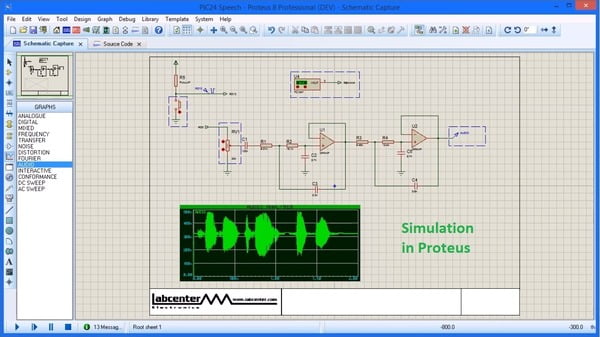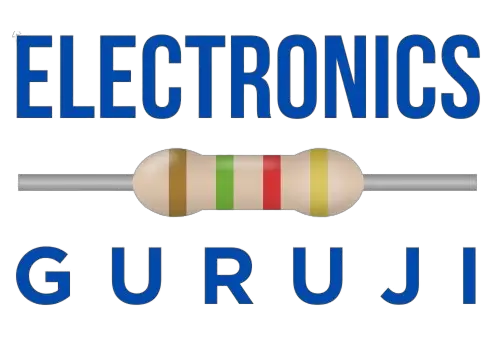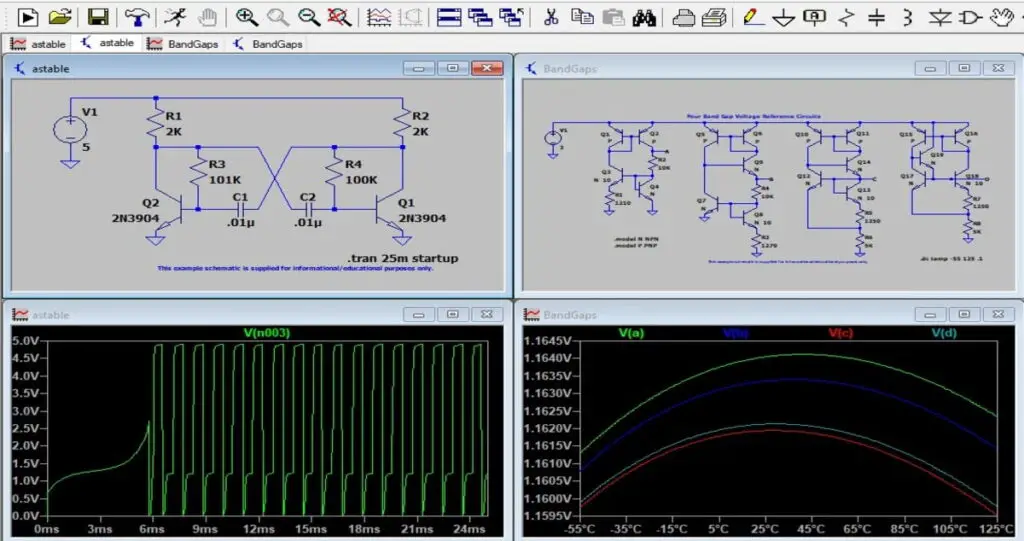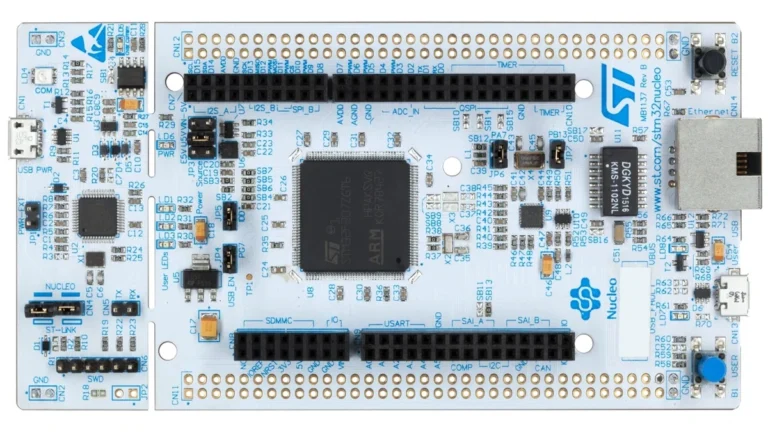Circuit simulation software is an essential tool for anyone working with electronics. Whether you’re a student learning the basics, a hobbyist experimenting with new ideas, or a professional designing complex systems, simulation software allows you to test and validate your circuits before building them. But with so many options available, how do you choose the best one for your needs?
This guide will walk you through the top circuit simulation tools, helping you pick the perfect software based on your skill level, project requirements, and budget. Let’s dive in!
Why Circuit Simulation Software Matters
Simulation software helps you:
- Test Ideas: Experiment with circuit designs without the risk of damaging components.
- Save Time: Identify and fix issues before building the physical circuit.
- Learn: Understand how circuits work through virtual experimentation.
- Optimize: Fine-tune your designs for better performance.
When choosing simulation software, consider:
- Ease of Use: Beginners need intuitive interfaces, while professionals require advanced features.
- Features: Look for tools that support analog, digital, and mixed-signal simulation.
- Cost: Free or low-cost options are great for learners, while professionals may need premium tools.
- Industry Fit: Some tools are tailored for specific industries or applications.
Best Circuit Simulation Software for Students and Beginners
1. LTspice

- Why It’s Great: LTspice is a free, high-performance SPICE simulator from Analog Devices. It’s widely used in academia and by hobbyists.
- Key Features:
- Supports analog, digital, and mixed-signal circuits
- Extensive library of components
- Fast simulation speeds
- Easy to learn and use
- Best For: Students and beginners learning circuit design and simulation.
2. EveryCircuit
- Why It’s Great: EveryCircuit is a user-friendly, web-based simulator that’s perfect for beginners. It’s also available as a mobile app.
- Key Features:
- Intuitive drag-and-drop interface
- Real-time simulation with animated voltage and current flow
- Pre-built example circuits for learning
- Affordable subscription plans
- Best For: Beginners and hobbyists who want a simple, visual way to simulate circuits.
3. Tinkercad Circuits
- Why It’s Great: Tinkercad Circuits is a free, browser-based tool from Autodesk. It’s great for beginners and integrates with Arduino simulation.
- Key Features:
- Easy-to-use interface
- Supports Arduino and basic electronic components
- Real-time simulation with virtual breadboarding
- Free to use
- Best For: Students and hobbyists working on simple projects or learning Arduino.
Best Circuit Simulation Software for Hobbyists and Makers
4. Proteus

- Why It’s Great: Proteus is a powerful tool that combines circuit simulation with PCB design, making it ideal for hobbyists and makers.
- Key Features:
- Supports analog, digital, and mixed-signal simulation
- Microcontroller simulation for embedded systems
- Integrated PCB design tools
- Extensive component libraries
- Best For: Hobbyists and makers working on microcontroller-based projects.
5. Multisim (by NI)
- Why It’s Great: Multisim is a professional-grade simulator with a user-friendly interface, making it accessible to hobbyists and students.
- Key Features:
- Supports analog, digital, and mixed-signal circuits
- Extensive library of components
- Real-time simulation with virtual instruments (oscilloscopes, multimeters, etc.)
- Affordable for hobbyists and educators
- Best For: Hobbyists and students who want a professional tool with an easy learning curve.
6. Falstad Circuit Simulator
- Why It’s Great: Falstad is a free, browser-based simulator that’s perfect for quick experiments and learning.
- Key Features:
- Simple and intuitive interface
- Real-time simulation with animated voltage and current flow
- Pre-built example circuits for learning
- Free to use
- Best For: Hobbyists and students who want a quick and easy way to simulate circuits.
Best Circuit Simulation Software for Professionals and Engineers
7. PSpice (by Cadence)
- Why It’s Great: PSpice is a industry-standard SPICE simulator used by professionals for high-performance circuit design.
- Key Features:
- Supports analog, digital, and mixed-signal circuits
- Advanced analysis tools (transient, AC, DC, etc.)
- Extensive component libraries
- Integration with PCB design tools
- Best For: Professionals working on complex, high-performance designs.
8. Simulink (by MathWorks)
- Why It’s Great: Simulink is a powerful tool for modeling and simulating complex systems, including electrical circuits.
- Key Features:
- Supports multi-domain simulation (electrical, mechanical, etc.)
- Extensive library of pre-built blocks
- Real-time simulation and code generation
- Integration with MATLAB for advanced analysis
- Best For: Engineers working on complex, multi-domain systems.
9. OrCAD (by Cadence)
- Why It’s Great: OrCAD is a comprehensive tool for circuit design and simulation, widely used in professional environments.
- Key Features:
- Supports analog, digital, and mixed-signal circuits
- Advanced analysis tools (signal integrity, thermal analysis, etc.)
- Integration with PCB design tools
- Extensive component libraries
- Best For: Professionals working on high-end, complex designs.
Best Circuit Simulation Software for Specialized Applications
10. QUCS (Quite Universal Circuit Simulator)
- Why It’s Great: QUCS is a free, open-source simulator with a focus on RF and microwave circuit design.
- Key Features:
- Supports RF and microwave circuit simulation
- Extensive library of components
- Open-source and free to use
- Cross-platform support (Windows, Mac, Linux)
- Best For: Engineers and hobbyists working on RF and microwave circuits.
11. Ngspice
- Why It’s Great: Ngspice is a free, open-source SPICE simulator that’s highly customizable and powerful.
- Key Features:
- Supports analog, digital, and mixed-signal circuits
- Command-line interface for advanced users
- Open-source and free to use
- Cross-platform support (Windows, Mac, Linux)
- Best For: Advanced users and professionals who need a customizable simulation tool.
12. KiCad with ngspice Integration
- Why It’s Great: KiCad, primarily a PCB design tool, integrates with ngspice for circuit simulation, making it a versatile choice for designers.
- Key Features:
- Schematic capture and PCB design
- Integration with ngspice for simulation
- Free and open-source
- Cross-platform support (Windows, Mac, Linux)
- Best For: Designers who want an all-in-one tool for circuit design and simulation.
How to Choose the Right Circuit Simulation Software
- Define Your Needs: Are you a student, hobbyist, or professional? What’s your budget?
- Evaluate Features: Look for tools that support the types of circuits you work with (analog, digital, mixed-signal, etc.).
- Consider Ease of Use: Beginners should prioritize user-friendly interfaces.
- Check Industry Compatibility: Some tools are tailored for specific industries or applications.
- Try Before You Buy: Many tools offer free versions or trials, so test them out before committing.
Final Thoughts
Whether you’re just starting out or working on high-end projects, there’s a circuit simulation tool that’s perfect for you. Beginners should explore free or affordable options like LTspice or Tinkercad Circuits, while professionals can dive into advanced tools like PSpice or Simulink. By choosing the right software, you’ll not only streamline your design process but also bring your electronic projects to life with confidence.








Hi, Thanks for such a great article. I tried LTspice and Tina-TI, both are really good.
i started electronics study when i was very young it cost me a fortune to buy nothing compared to today i wish i was young all over again their are so many fields of study today.
Hi Robert, That’s amazing to hear about your early start in electronics! It’s true, the landscape has evolved so much since then. Best Wishes.